Hoofdstuk 1: introductie - modsim
1/58
There's no tags or description
Looks like no tags are added yet.
Name | Mastery | Learn | Test | Matching | Spaced |
|---|
No study sessions yet.
59 Terms
system
a set of elements, parts, or components coherently organized and interconnected into a pattern or structure that produces a characteristic set of behaviors called a function or purpose
function: natural systems
purpose: man-made systems
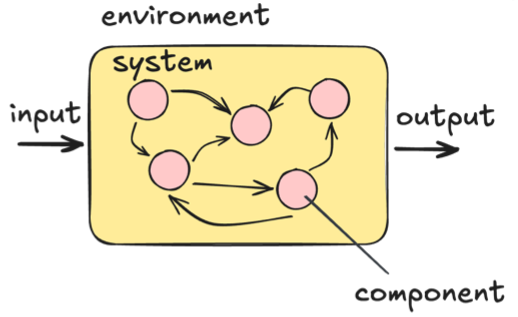
natural system
vb ecosystem or solar system
manufactured or artificial system
vb company, railway system
closed system
no exchange with environment
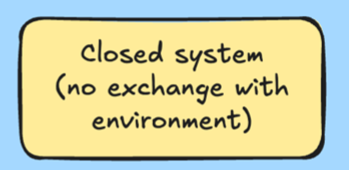
open system
free exchange of matter and energy

semi-open system
exchange of some matter and energy

stocks and states
elements that can be quantified at a given time, but they differ in scope
elements that are quantified at a different time. In a diagram they are represented by boxes in diagrams

stocks
accumulated quantity of a specific resource or material, both tangible and intagible
are accumulated and act as buffers
states
encompass a broader range of conditions or situations, includig physical variables and even more abstract concepts
more general and involve both physical variables
inputs
enter the system
outputs
leave the system
flows
represent the moments of resources into, out or within a system. they are drawn as arrows, can be positive or negative and change the stock by filling, draining, growing, producing, decaying, evalorating, losing, secreting, or transforming it.
∆stock =
ingoing flows - outgoing flows
engineer a stock
by manipulating the in-or outgoing flows
feedback
a closed chain of causal connections where a change in a stock affects a flow, which in turn affects the stock again. It's the mechanism by which a system can regulate itself, either by amplifying or dampening change.
positive feedback
the higer the value of the stock, the faster it increases, often destabilizing
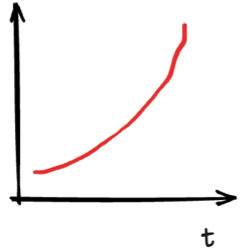
negative feedback
opposes the original change, inhibits its own activity, usually a stabilizing force
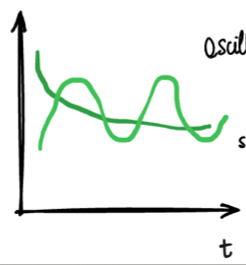
non-renewable stock
stock-limited
positive feedback: more profit → invest more
negative feedback: more stock removed → harder to extract remaining oil
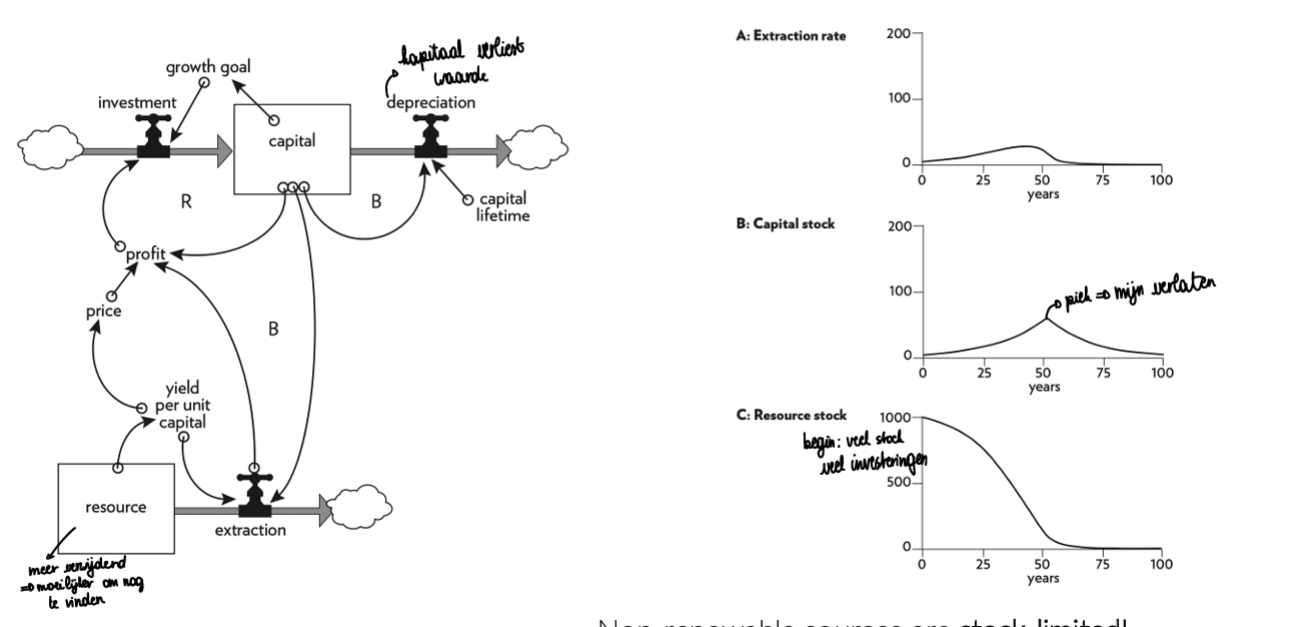
renewable stock
flow-limited
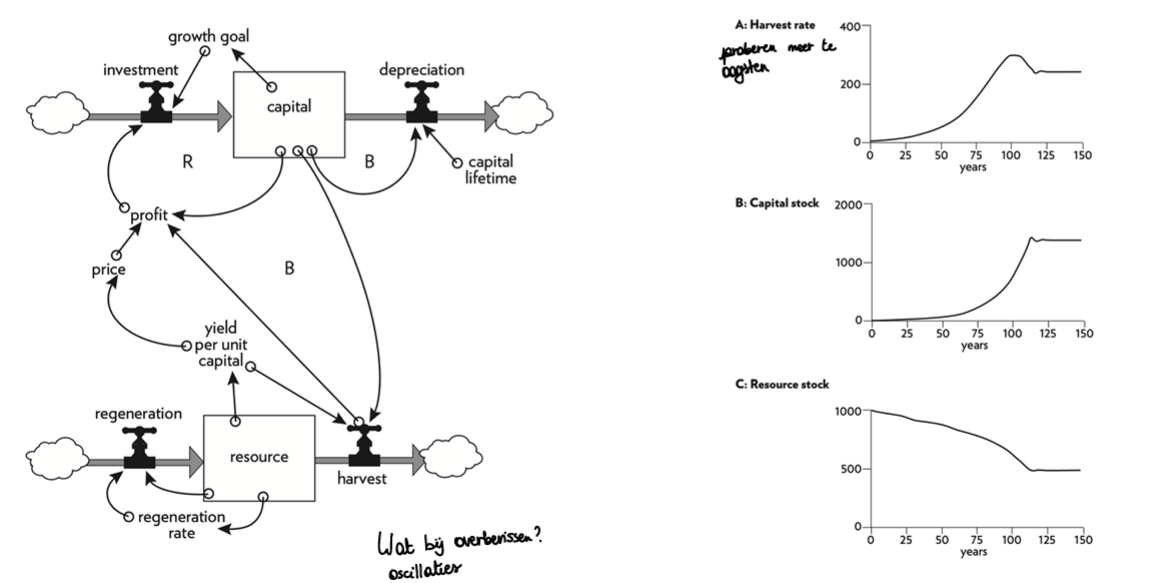
mathematical model
a simplified representation of a real-world system or phenomenon using mathematical equations, relationships, and logic to understand, predict, or control its behavior:
• They relate to a specific system
• They are a simplification (abstraction, idealization)
• They must be quantitative
physical or conceptual models

key aspects of a mathematical model
states or variables
indepent variables
dependent variables
constants
parameters
states or variables
dexcribe the system at a given time (= stocks)
independent variables
known and set (time, spatial coordinates, fixed inputs…)
dependent variables
change depending on the other model components (vb pressure or concentration)
constants
quantities that are known and fixed (mathematical and physical constants)
parameters
values that can change from experiment to experiment, usually need to be determined experimentally
! fixed within a particular run in a model (otherwise variables)
inputs (model, control theory)
often independent variables, one can control
outputs (model, control theory)
the states one can observe
complex vs simple models
More complex models can
• Be more realistic and perform more specific predictions
• Can represent more detailed information about the system
However, compared to simple models, they
• Require more data to calibrate and validate
• Are more difficult to understand
• Are computationally more costly.
trade-off between accuracy, interpretability and computational resources
reasons for creating mathematical models
1. for forecasting and the prediction of future states;
2. for the design and optimization of the system;
3. for estimation and control, using feedback and measurements;
4. for interpretability and physical understanding.
linear model
a change in the input corresponds to a proportional change in the output
usually easy to work with, understand and solve
Taylor approximation to create locally linear approximations of nonlinear models

nonlinear model
change in one variable does not lead to a proportional change in another
challenging or even impossible to solve analytically
static model
describes system at a fixed point in time
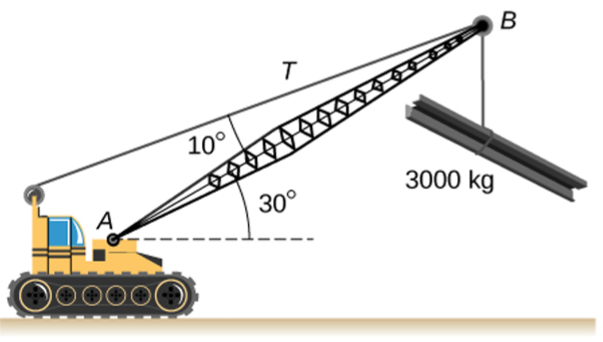
dynamic model
capture how systems change and evolve over time
can be studied in a steady state

discrete models
• Represent systems as a collection of distinct, separate elements or states.
• Variables change in defined steps or jumps.
• Examples: Board games, queuing systems, population models with discrete generations.
continuous models
• Represent systems with smooth, unbroken changes.
• Variables can take on any value within a range
• Examples: Fluid flow, temperature changes, motion of planets.
computer
discreet apparaat, maar eigenlijk is alles continu
discrete or continuous
• State variables: Discrete (e.g., number of customers) vs. continuous (e.g., temperature).
• Space: Discrete (e.g., grid cells) vs. continuous (e.g., any point in a region).
• Time: Discrete (e.g., time steps) vs. continuous (e.g., any point in time).
explicit models
output or future state of the system is calculated directly from the current state and the known inputs
formule voor y(x) bestaat, niet als dv
implicit model
output or future state is not directly calculated. It’s implicitly defined through an equation involving both the current and future states. This equation needs to be solved to find the future state
chaotic model that will show dynamics strongly dependent on the initial conditions and parameters
deterministic models
• Outcome is fully determined by the initial conditions and the model's equations.
• No randomness involved; the same inputs always produce the same outputs.
• Example: Predicting the trajectory of a projectile in a vacuum.
stochastic models
• Incorporate randomness or probability in their calculations.
• Same inputs can lead to different outputs due to inherent uncertainty.
• Example: Predicting the spread of a disease, where individual interactions are unpredictable.
all computers are
deterministic, randomness is artificial
Probabilistic ≠ stochastic
• Probabilistics involves probability distributions; computations can be perfectly deterministic.
• Stochastic models use randomness in their computation.

data-driven model
mainly guided by observed data
+ Capture any pattern given enough data
+ Good for prediction
- Might not generalize
- Lower explanatory power
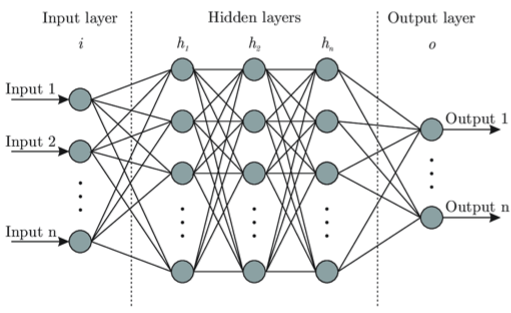
mechanistic model
mainly based on the knowledge of underlying processes and physical laws
+ Can generalize to new scenarios
+ Insight into underlying processes
- Required detailed knowledge
- Sometimes computationally expensive
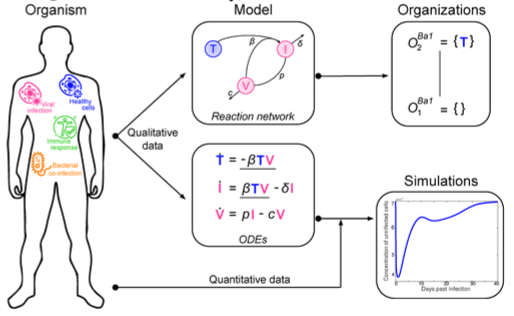
in practice
always overlap between data-driven and mechanistic model
data-driven modelling
compressing data into a model or statistic

simulation-bades modelling
compressing data into a model or statistic
model opgesteld o.b.v. kennis → data genereren
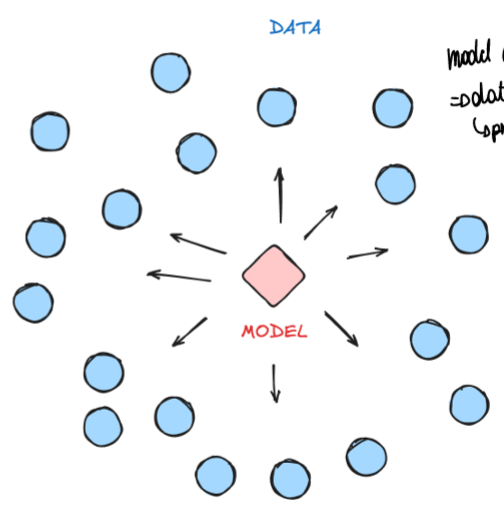
spatially explicit
• Considers the location and spatial arrangement of components.
• Captures interactions and processes that depend on location.
• Example: Spread of a disease in a city, considering how people move and interact.
spatially implicit
• Ignores spatial locations and assumes all components are "well-mixed.”
• Simpler but may not capture important spatial dynamics.
• Example: Basic population growth model without considering where individuals live.
distributed models
• Consider spatial variation in parameters and variables.
• Represent the system as a collection of interconnected components or elements.
• More realistic for systems with significant spatial heterogeneity.
• Example: Modelling temperature distribution in a rod, considering heat transfer along its length.
lumped models
• Treat the system as a single, homogeneous unit.
• Ignore spatial variations and assume uniform properties throughout.
• Simpler to analyze but may lose accuracy in spatially complex systems.
• Example: Modelling the average temperature of a room, assuming uniform temperature distribution.
simulation
the imitation of the operation of a realworld process or system over time. It involves creating a simplified representation (i.e., the model) of the system and using it to study its behavior under different conditions or scenarios
virtual experimenting
simulation on a computer
cheaper
faster
safer
than real-world experiments
digital twin
a simulation model of a real system that has a bidirectional flow of information:
• The digital twin is updated in real-time using sensor measurements of the physical twin
• The digital twin has a predictive capacity to inform decision-making in the physical system.
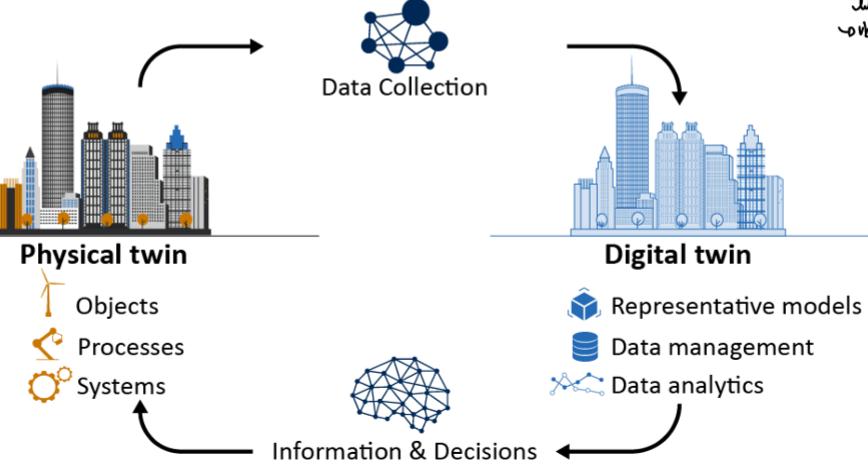
simulation cycle
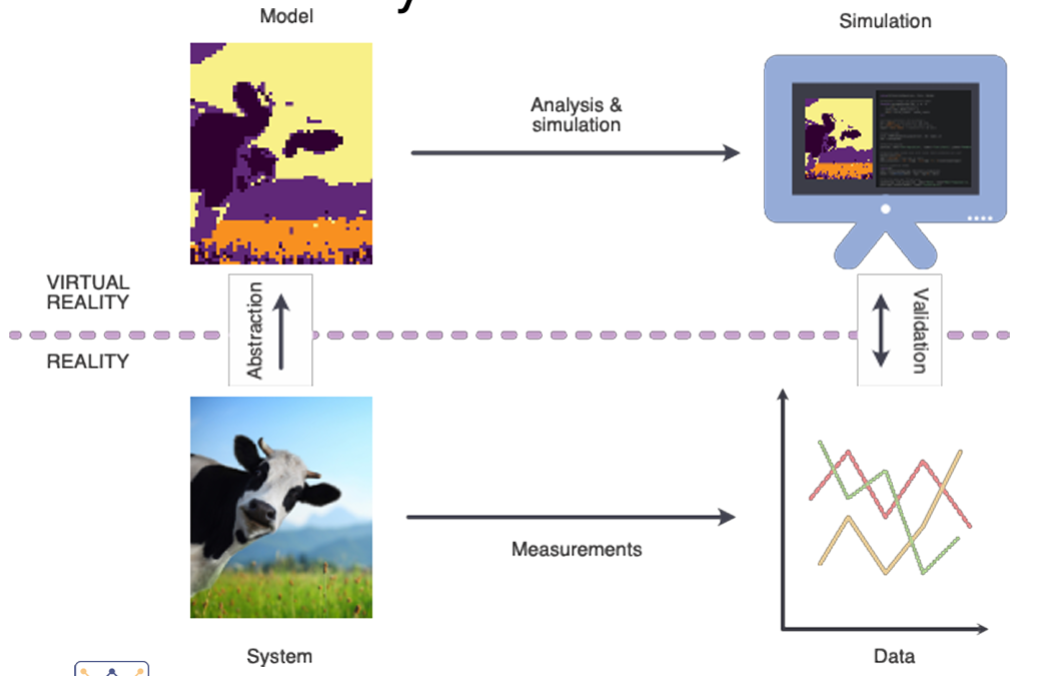
the Simulation Hypothesis
the belief that we live in a simulation, arguments:
1. Future civilizations might possess the immense computing power needed to create ancestor simulations.
2. Such civilizations might have reasons to run numerous ancestor simulations, perhaps for research, entertainment, or other purposes.
3. If many ancestor simulations exist, we are more likely to live in one rather than the “real” world.